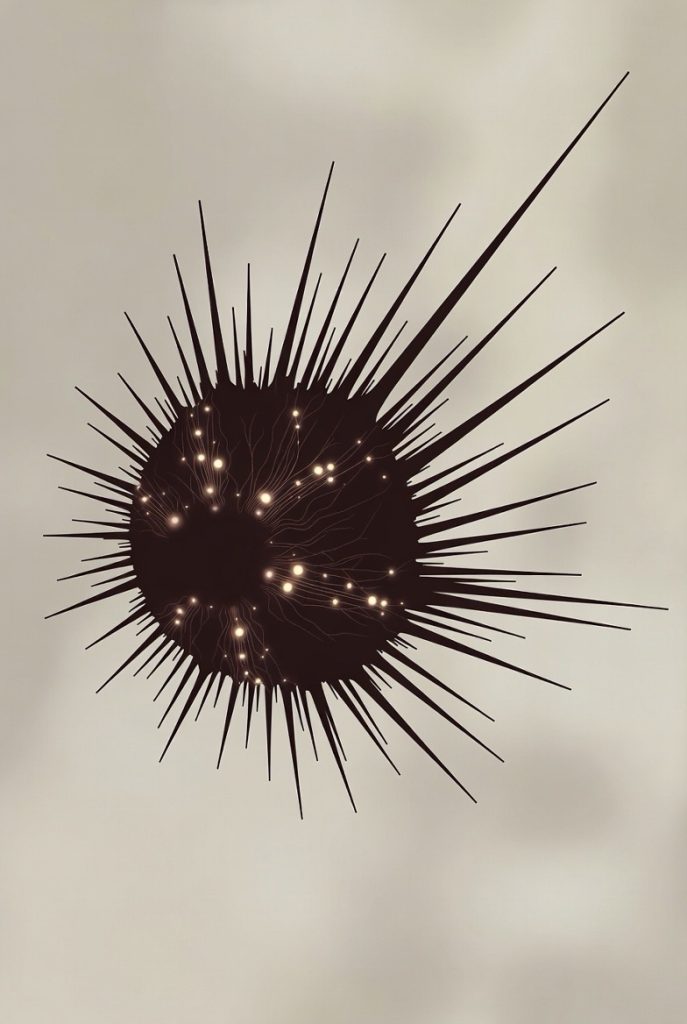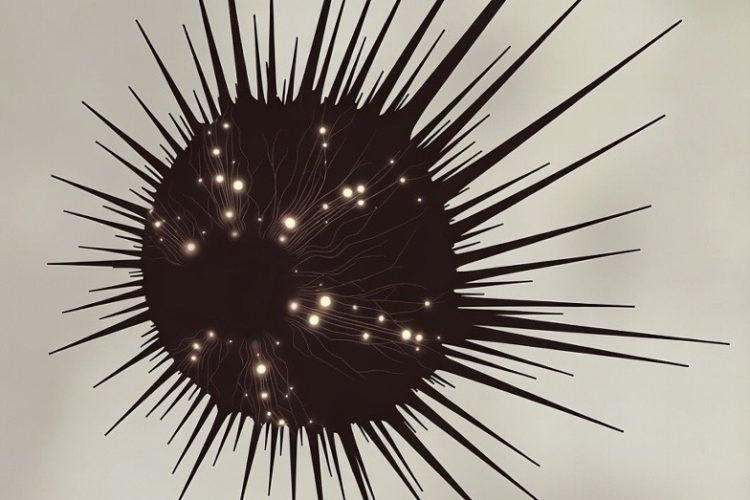Sea urchins, long considered brainless animals with just a simple decentralized nervous system (five radial nerves, a circumoral nerve ring, and a diffuse nerve net), are actually one giant distributed brain. A major 2025 study using single-nucleus RNA sequencing on juvenile purple sea urchins revealed that over 60% of their cell types are neuronal, expressing vertebrate-like genes for synapses, neurotransmitters, and complex signaling throughout the body, spines, and tube feet. They even achieve whole-body vision without eyes: multiple opsins scattered across the skin let them detect light and shadows in a compound-eye style, processed by the integrated neural network. Evolutionarily, their pentaradial body is essentially an expanded, head-like structure packed with brain-level complexity. This discovery shows that lacking a centralized brain doesn’t mean lacking intelligence—sea urchins prove sophisticated cognition can be fully distributed.
Long Version
Sea Urchins Are Essentially One Giant Distributed Brain: A Breakthrough in Echinoderm Neuroscience
For decades, sea urchins were textbook examples of animals lacking a brain. They were described as possessing only a simple decentralized nervous system: five radial nerves connected by a circumoral nerve ring and an extensive nerve net, with no centralized processing center. A major study published in November 2025 has fundamentally changed that understanding.
By applying single-nucleus RNA sequencing to entire juvenile purple sea urchins (Paracentrotus lividus), researchers revealed that the adult echinoderm body is dominated by neural tissue to an unprecedented degree. More than 60% of all transcribed cell types in the juvenile are neuronal or neural-supporting, turning the classic view of a “brainless” animal on its head. The entire body—from the oral surface to the tips of the spines and tube feet—functions as an integrated, brain-like system.
The Traditional Understanding of Sea Urchin Neuroanatomy
Adult sea urchins exhibit pentaradial symmetry organized around five ambulacral grooves that house hundreds of hydraulic tube feet powered by the water vascular system. The nervous system was historically characterized as:
- A circumoral nerve ring encircling the mouth
- Five longitudinal radial nerve cords
- A diffuse peripheral nerve net innervating spines, pedicellariae, and podia
- No discrete brain or major ganglia
This decentralized nervous system was thought sufficient for basic reflexes, locomotion, and righting behavior but lacking true integrative complexity.
The New Evidence: An All-Brain Body Plan
Because the calcified test prevents easy dissociation of intact cells, previous single-cell transcriptomic studies were limited. The breakthrough came from single-nucleus profiling of whole two-week post-metamorphic juveniles. The dataset identified 48 distinct cell clusters, of which 29 were neuronal or neural in nature—an extraordinarily high proportion.
Key discoveries include:
- Widespread expression of vertebrate-like neuronal genes (synaptic proteins, ion channels, neurotransmitter receptors) throughout the body
- Remarkable neuronal diversity: sensory neurons, interneurons, motor neurons, and neurosecretory cells expressing conserved transcription factors typical of vertebrate central nervous systems
- Extensive neuropeptide signaling and classical neurotransmitter systems (glutamatergic, cholinergic, GABAergic) distributed across the animal
- Molecular evidence of ganglion-like integrative hubs along the radial nerves
The echinoderm nervous system is therefore not a primitive nerve net but a highly sophisticated distributed brain permeating nearly the entire organism.
Decentralized Vision and Whole-Body Photoreception
Sea urchins display robust phototaxis and even rudimentary spatial resolution despite having no eyes. The new transcriptomic data explain how:
Multiple opsins—including melanopsin (opsin4), go-opsin, opsin2, opsin3.2, and others—are expressed in tube feet, spines, pedicellariae, and body wall. These light-sensitive cells are directly embedded within the decentralized nervous system and coupled to canonical phototransduction cascades. The animal effectively “sees” with its entire surface in a compound-eye-like manner, integrating diffuse visual input across radial nerves and the circumoral nerve ring to generate coherent behavior.
Evolutionary Context: A Predominantly Head-Like Neural Animal
Molecular and paleontological evidence has long suggested that the adult echinoderm body plan represents a massively expanded anterior (head-like) domain, with little or no molecular trunk identity. The new data reinforce this view: conserved anterior patterning genes and neural specifiers are expressed body-wide, while the post-metamorphic juvenile lacks typical trunk signatures. The result is an organism whose body is simultaneously sensory surface, effector apparatus, and distributed processing center—an all-body brain evolved from a bilaterian ancestor through extreme neural elaboration rather than simplification.
Broader Implications
- Challenges the assumption that lack of centralization equals simplicity; distributed architectures can achieve high computational sophistication
- Provides a natural model for non-cephalized intelligence and neuromorphic design principles
- As deuterostomes and our closest invertebrate relatives, echinoderms offer critical insight into the ancestral state of complex nervous systems before chordates centralized processing into a dorsal nerve cord and brain
- May help explain the extraordinary regenerative capacity and extreme longevity (decades to over a century with negligible senescence) observed in many sea urchin species
The conclusion is clear: sea urchins are not brainless. They represent one of evolution’s most radical experiments in neural organization—an animal whose entire body functions as a sophisticated, integrated, brain-like system without a single centralized brain. This discovery expands our understanding of what a brain can be and how diverse neural solutions have emerged across the animal kingdom.









